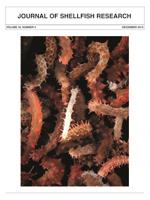The Humboldt Current that bathes the west coast of South America is affected by different influences at daily to decadal periodicities. Environmental influences such as upwelling or coastal trapped waves as well as climate influences such as El Niño southern oscillation and Pacific decadal oscillation events interact and modify the thermonutricline depth of this Humboldt Current System. The position of this thermonutricline plays a key role in Humboldt Current System functioning by driving sea surface temperature (SST) and primary production variations. As filter feeders, bivalves are particularly affected by SST and primary production, and their shells can provide information about these two environmental factors. Using sclerochronology, we studied three bivalve species from different ecological niches living along the Peruvian—Chilean coast. Depending on the species, thick or thin sections, etched or not, were studied using an optical microscope. Increment thicknesses were measured at the surface of the shell and/or in cross-section. Moreover, the mineralogical composition of the different layers of the studied shells was determined on thin sections by Fourier transform infrared spectroscopic analyses. Growth results were then interpreted tentatively in terms of environmental variations. For the free-living, short-lived Pectinidae Argopecten purpuratus, the daily growth rhythm is linked to the solar period whereas growth amplitude seems to be related to the occurrence of spawning events, probably triggered by specific water temperature patterns. tidal regime and SST seem to be the major environmental parameters that govern shell growth rhythms and/or increment thickness for two nearshore species—the Mytilidae Choromytilus chorus and the Veneridae Eurhomalea rufa—which grow more slowly and have a life span longer than A. purpuratus, and have a strong potential for paleo-environmental and paleo- El Niño southern oscillation reconstruction. These results need to be confirmed studying multiple shells to quantify individual growth variations and to enhance the significance of the findings on the different environmental parameters recorded in the growth patterns of the South American bivalve species studied.
How to translate text using browser tools
1 December 2013
Sclerochronological Studies in the Humboldt Current System, A Highly Variable Ecosystem
Marc Gosselin,
C. E. Lazareth,
L. Ortlieb
ACCESS THE FULL ARTICLE

Journal of Shellfish Research
Vol. 32 • No. 3
December 2013
Vol. 32 • No. 3
December 2013
bivalve
Chile
Coastal trapped waves
El Niño Southern Oscillation
Humboldt Current System
Peru
sclerochronology




